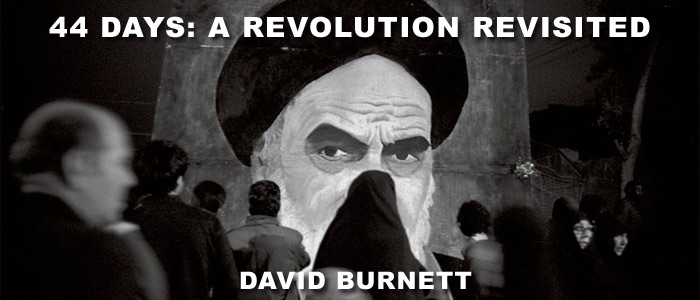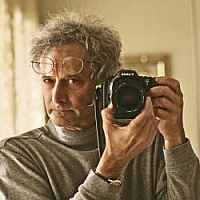
"How to Start to Save Photojournalism" in the September issue of The Digital Journalist is now online at http://digitaljournalist.org
Thirty years ago, photojournalist David Burnett found himself in the heart of a revolution. He was in Tehran when Shah Mohammad Reza Pahlavi fled the country and watched as Ayatollah Ruhollah Khomeini declared Iran an Islamic Republic. Burnett has just published a book with the National Geographic Society of those photographs and exhibited them this year at Visa Pour l'Image in Perpignan. In his text, David tells us what it was like to record this turbulent era – the precursor for much of what has happened in the Middle East in the last three decades.
In the past two issues, we have been writing about our own turbulent times in photojournalism. We have traced the root of the problems in an industry that has permanently reset itself. As one well-known photographer recently said, he now looked forward to "the job of the month." It is difficult to discern much hope in this bleak landscape, but in our editorial this month we offer a suggestion on how philanthropy can be used to "prime the pump" to breathe some life back into this vital form of preserving our history. We hope that this editorial can start a discussion in the boardrooms of these foundations.
Executive Editor Ron Steinman continues this thread as he writes, "Whatever anyone thinks, we must consider where the news will come from and the form it will take in the future. Free or not, pay wall or not, advertising or not." As he says, the entire industry is a mess, and he looks at some of the ideas to save it.
Earlier this month, The Associated Press released a photograph taken by staff photographer Julie Jacobson in Afghanistan of a dying Marine being aided by his fellow soldiers. This graphic photograph was picked up immediately by many newspapers, and became the subject of talk show discussions. It raised a question that has been brought up many times in the past: What is the obligation of a photojournalist, and news organization, to spare the feelings of a family member as opposed to the responsibility of documenting the truth? We take up this issue in two columns this month. Ethics editors Karen Slattery and Mark Doremus discuss this sensitive topic, while E-Bits editor Beverly Spicer offers us the narrated slide show that Julie prepared, and writes that the controversy is a classic struggle between privacy, secrecy, the duty of the press, and the public's right to know. We also run Julie Jacobson's own journal of that fateful day. We thank The AP for their help on this topic!
al story.
For September we have three dispatches: Derek Henry Flood on the recent elections and disputed results in Afghanistan; Jean Chung writes of the terrible price paid by raped women in the Democratic Republic of the Congo, and Ryan Pyle considers the access problems in China during the 60th anniversary celebration on Oct. 1, 2009.
In her column, The Reporter's Life, Eileen Douglas writes that she loves the stories journalists tell, sitting around talking to each other, not the stories that get into the newspaper or onto the air. Sometimes listening to them is the best part of the job.
It took a hot summer night for Dick Kraus to have an epiphany about how far we have come since he first started newspapering in 1960. You can see it in this month's Assignment Sheet. Oddly enough it's called "Thoughts on a Hot Summer Night."
Our regular pundits, Bill Pierce, Chuck Westfall, Mark Loundy and Terry Heaton, are back with their wide-ranging columns on photography and journalism.
This is the 12th anniversary of The Digital Journalist. It is our 143rd monthly issue. We thank our prime sponsor, Canon, for loyally staying with us all these years and doing so much to help photojournalism. In the months ahead we will have new features designed to provide more help to you all.
We hope you enjoy this issue.
Dirck Halstead
Editor and Publisher

